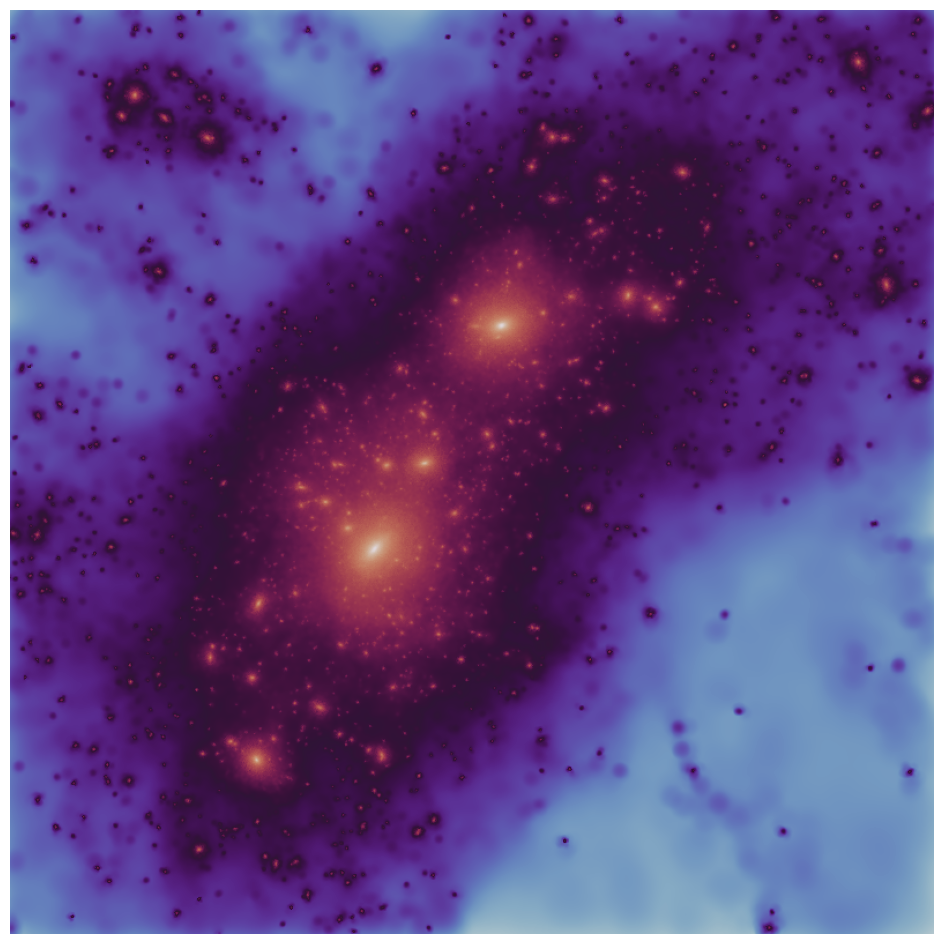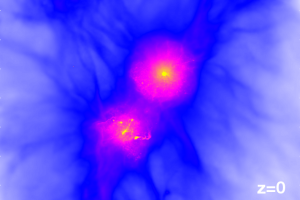We introduce “Simulations Beyond The Local Universe” (SIBELIUS), a set of cosmological constraint simulations, that connect the Local Group to its cosmic environment. We show that introducing hierarchical small-scale perturbations to a density field constrained on large scales by observations provides an efficient way to explore the sample space of Local Group analogues.

Four Local Group realisations of the Sibelius project, created by varying intermediate scales. Being set on larger scales, the total mass, total energy and orientation are nearly identical. However, the separation of the two main haloes varies greatly between individual realisations.
Using the methods described in our previous paper, we create more than 60,000 simulations to identity we identify a hierarchy of Local Group characteristics emanating from different scales. We find that the total mass, orientation, orbital energy and the angular momentum are largely determined by modes above λ = 1.6 comoving Mpc (cMpc) in the primordial density field.
Smaller scale variations are mostly manifest as perturbations to the Milky Way – M31 orbit, and we find that the observables commonly used to describe the Local Group — the Milky Way – M31 separation and radial velocity — are transient, and depend on specifying very small scales down to 0.2 cMpc in the primordial density field.

Detailed view of a Local Group analogue from a dark matter simulation of the Sibelius project. The two large haloes are analogues of the Milky Way and M31.
We also find that the presence of M33/LMC analogues significantly affects the Milky Way – M31 orbit and its sensitivity to small-scale perturbations. We construct initial conditions that lead to the formation of a Local Group whose primary observables precisely match the current observations.









